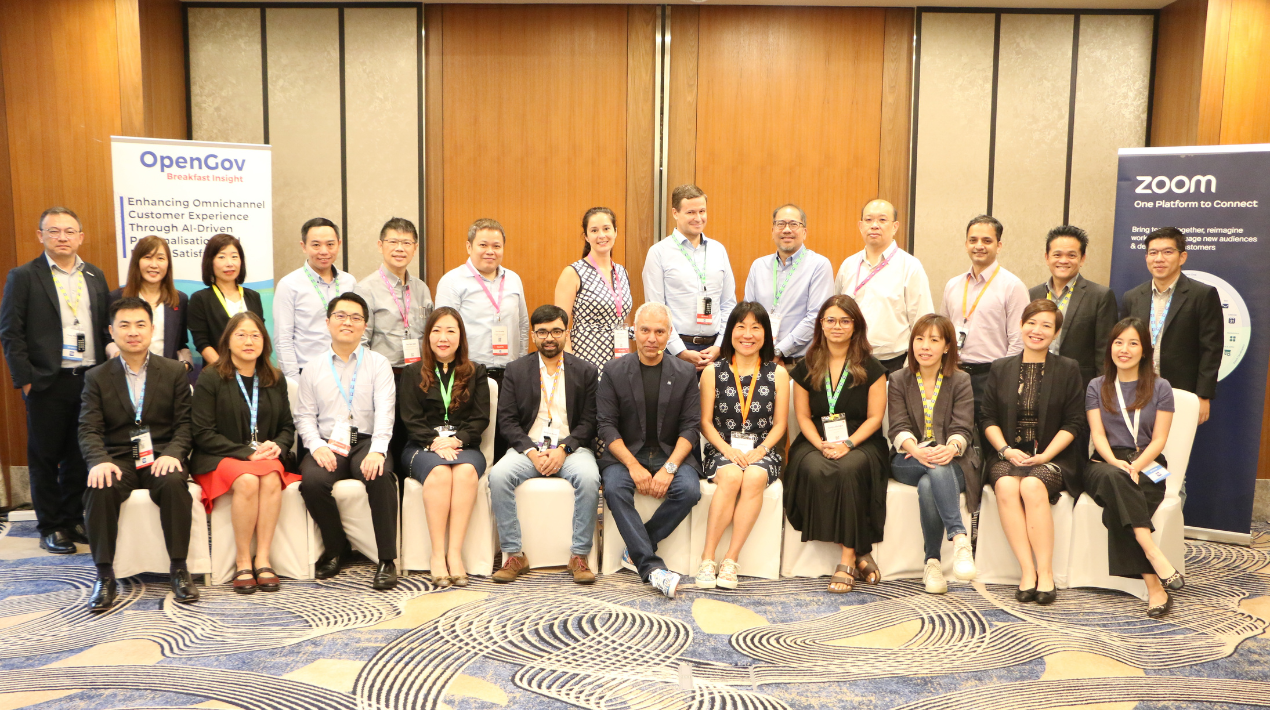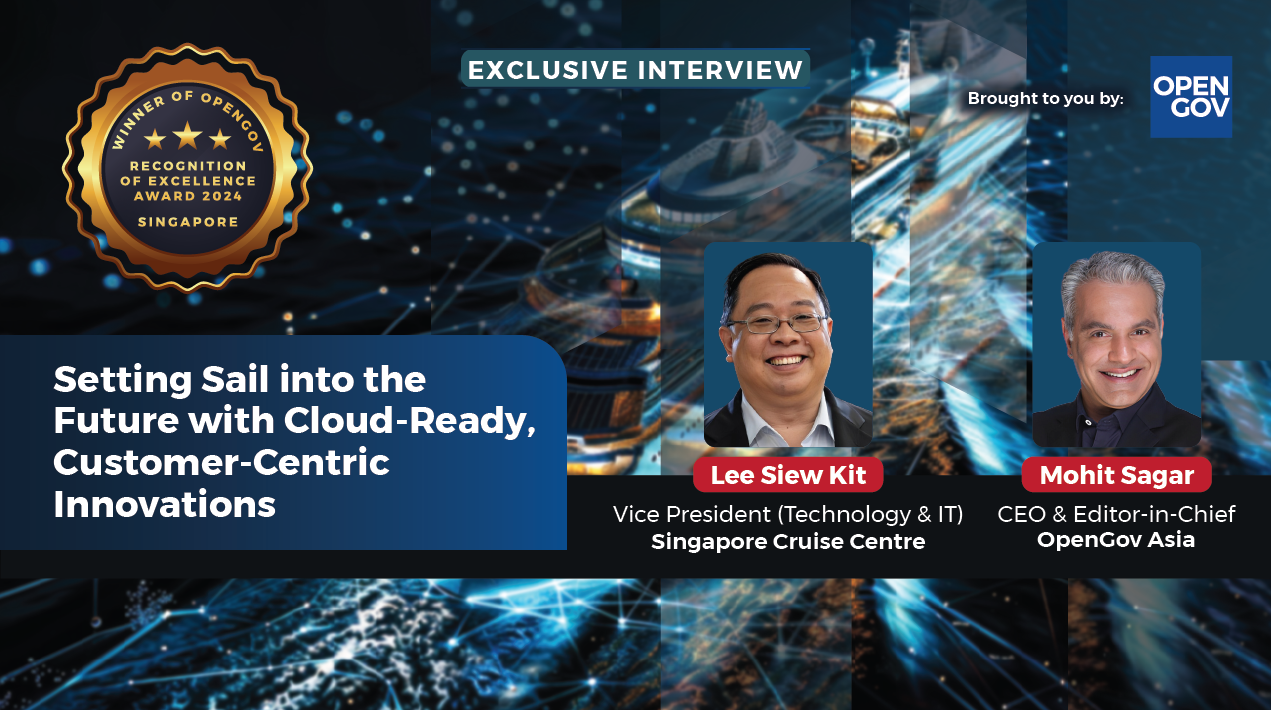
|
Getting your Trinity Audio player ready...
|
In light of the remarkable advancements in digital technology, businesses must recognise that prioritising the consumer experience has become a crucial and distinctive factor. As interactions between businesses and consumers multiply across numerous channels, customers are placing greater emphasis on convenient accessibility and overall satisfaction available through these diverse channels.
In order to meet the ever-changing expectations of consumers, businesses are incorporating artificial intelligence (AI) into their operations to enhance customer satisfaction in the digital realm. By harnessing the capabilities of AI, companies can analyse consumer data, gaining valuable insights into individual preferences, behaviours and needs.
Through algorithms, companies can effectively meet customer expectations by delivering customised and pertinent solutions. They can deliver personalised experiences and recommendations to customers across multiple digital touchpoints. This includes offering targeted product suggestions and promotions through various channels such as websites, mobile apps, social media platforms, and online stores.
AI-powered chatbots and virtual assistants have become crucial in swiftly and precisely understanding and addressing customer inquiries. Through natural language processing and ML techniques, these chatbots offer rapid and accurate responses, enhancing customer service efficiency. They can handle basic queries, furnish product information, facilitate transactions, and even resolve consumer issues. As a result, companies can achieve high levels of customer satisfaction by leveraging this technology effectively.
AI technology plays a pivotal role in enabling companies to analyse consumer interests and patterns, particularly in relation to their satisfaction with different digital platforms. By examining gathered consumer data, reviews, social media interactions, and other relevant information, companies can gain insights that help them identify areas for improvement and adjust their strategies accordingly.
This data-driven approach empowers companies to make informed decisions and optimise their offerings to better meet customer expectations and enhance overall satisfaction. It helps in identifying areas for improvement, responding to customer issues and proactively improving the overall customer engagement.
Personalising the customer experience to this extent leads to a more appealing and relevant interaction, ultimately resulting in increased consumer satisfaction and loyalty.
The OpenGov Breakfast Insight on 19 July 2023 at Voco Orchard, Singapore centred around the theme of leveraging advanced AI/ML technologies to deliver a fast, accurate, and relevant customer experience across various sectors, including business, education, financial services, healthcare, and the public sector in Singapore.
Opening Remarks

Mohit Sagar, CEO and Editor-in-Chief of OpenGov Asia highlights the potential for businesses to provide personalised recommendations, offers, and information through AI-driven customisation.
Incorporating AI-driven personalisation and digital delight within omnichannel strategies enhances customer experience, fosters loyalty, and drives revenue growth.
Businesses can adapt to remote interactions, meet evolving consumer expectations, transcend industry boundaries, and ensure the ethical utilisation of customer data.
This approach allows businesses to deliver tailored interactions and seamless continuity across various touchpoints, creating a more engaging and relevant experience for customers. By embracing these practices, businesses can cultivate meaningful customer relationships and achieve sustainable success in the digital landscape.
Recognising the importance of prioritising AI adoption, businesses can effectively stay competitive in the digital age and harness its potential for delivering enhanced customer experiences and achieving business success. They have the opportunity to boost customer satisfaction, foster brand loyalty, and drive growth by analysing customer data, leveraging AI-powered chatbots, and identifying new revenue opportunities.
AI-driven enhancements to the omnichannel consumer experience offer various advantages. These include sentiment analysis, hyper-personalisation, chatbots and virtual assistants, predictive customer service, customised product recommendations and metrics to measure digital consumer satisfaction. Furthermore, these advancements lead to improved efficiency, customer satisfaction and overall corporate performance.
AI-powered solutions such as automated personalisation and chatbot customer assistance offer enhanced and cost-effective omnichannel experiences. Through features like predictive analytics for proactive service, real-time customer care through chatbots, smooth interactions with voice assistants, 24/7 accessibility, and automation-driven cost savings, these innovations not only exceed customer expectations but also enhance operational efficiency for businesses.
However, implementing AI-driven personalisation and prioritising digital happiness in practice presents various challenges that businesses need to address. These challenges encompass concerns related to data privacy, integration complexities, limited customer understanding, skill and talent gaps, cost-effectiveness, return on investment considerations, and ethical implications.
Overcoming these obstacles is crucial to ensure the ethical and efficient utilisation of AI technology while delivering optimal outcomes for businesses and customers alike. In addition, businesses need to place a high priority on customer trust and privacy as they invest in infrastructure, talent, and technology to capitalise on these opportunities.
In the future, businesses stand to gain significantly from an AI-driven omnichannel customer experience. Technological advancements such as Natural Language Processing (NLP), Predictive Analytics, advanced Chatbots and Virtual Assistants, Hyper-Personalisation, and the integration of Augmented Reality (AR) and Virtual Reality (VR) will shape customer interactions.
“Delivering smooth, pertinent, and customer-focused experiences is made possible for organisations by AI-driven personalisation and a smooth digital interaction,” Mohit says. “Embracing these innovations will enable businesses to meet and even exceed customer expectations in an ever-evolving digital world.”
Welcome Address

Nathan Guy, Head of UCaaS, Asia Pacific, at Zoom, highlights that support leaders across various company sizes, ranging from SMBs to larger enterprises, consistently emphasise two key points. Firstly, they face the challenge of accomplishing more with limited resources and secondly, they have to deal with the growing need for responsive and proactive customer service.
To effectively scale their teams, support leaders employ a combination of technology and automation while maintaining agility and adaptability to accommodate business changes. This approach enables them to efficiently handle increased workloads, particularly during peak periods such as Black Friday or holiday seasons, without solely relying on hiring additional agents.
Instead, they prioritise finding tools and technologies that can deliver improved outcomes without incurring substantial costs. By leveraging innovative solutions, they strive to optimise their support operations, enhance productivity, and maintain a high level of customer service without overburdening their resources.
As far as service and experience go, customers expect brands to provide seamless support across multiple channels like phone, video, and webchat, aiming for single contact resolution. A single negative experience can drive loyal customers to consider switching to a competitor.
“According to a Gartner survey, over 60% of customers would contemplate moving their business due to a poor customer experience,” Nathan explains. “This presents a significant risk for businesses, and technology is now driving a differentiation strategy to enhance user and customer experiences.”
Zoom’s AI innovation is focused on three areas: supporting individual productivity, powering better collaboration, and helping customer-facing teams improve customer satisfaction. The company’s approach to AI revolves around three key themes:
- Empowering: Zoom aims to utilise AI in a way that enables both individuals and teams to maximise their capabilities and potential.
- Responsible: Privacy, security, inclusion, trust, and safety are ongoing priorities. They emphasise that customer data remains under the control of the customers themselves, ensuring that they have the autonomy to decide how their data is used.
- Federated: They adopt a flexible approach that can adapt to the rapidly evolving industry landscape. This includes the ability to work with proprietary models, third-party models, or even Zoom’s own AI model.
Zoom offers a Customer Experience portfolio that includes Zoom Contact Center, Zoom Virtual Agent, and a new Workforce Engagement Management (WEM) offering. Zoom Virtual Agent is the result of their Solvvy acquisition and is a comprehensive Conversational AI platform for customer support, self-service, and automation.
“Globally tech investments surged during the pandemic, underscoring the importance of having flexible technology stacks to adapt to changing circumstances,” Nathan says. “With ongoing economic uncertainty and budget reductions, establishing a strong foundation for the technology stack becomes crucial for stability and growth.”
Unlocking the potential of the future workplace entails addressing key challenges including evolving collaboration and productivity frameworks, nurturing personal connections and meeting updated expectations of teams and customers.
In addition, Nathan emphasises that a successful technology infrastructure should encompass key elements like a cloud and mobile-first approach, prioritising employee engagement, fostering flexibility, enabling real-time collaboration, promoting emotional well-being for healthy teams and ensuring effective training, development, and change management to drive positive outcomes.
Nathan acknowledges that a solid foundation is crucial for a collaboration platform, and Zoom has developed a range of communication and collaboration solutions specifically designed to cater to the diverse needs of knowledge workers, departments, and industries. The company has invested significantly in AI to further enhance the collaboration experience across its solutions.
The ultimate focus is on serving different audiences, with customers and their employees at the top of the hierarchy. All the innovations and launches aim to empower organisations and their customers to thrive in the new era of work.
“Customer-facing teams need to address various challenges to provide an exceptional customer experience,” Nathan knows well. “By empowering these teams to become subject matter experts, businesses can deliver personalised experiences that delight customers.”

Jayraj Nair, Customer Experience Lead-ASEAN at Zoom, emphasises the goal of integrating all product innovations into a unified solution that empowers knowledge workers and teams, enabling seamless collaboration internally and with external customers, ultimately driving business growth.
Employee collaboration encompasses a wide range of activities, including calendar management, chat, email management, meeting collaboration, casual collaboration through huddles, and concluding tasks with phone calls. On the other hand, customer collaboration encompasses marketing events, webinars, sales processes, and delivering a seamless customer experience, all facilitated within a single interface.
The negative impact of poor customer experiences on businesses is substantial. Meeting customer needs in today’s landscape is increasingly challenging, requiring personalised and insightful experiences despite limited resources. Various studies underscore these trends and emphasise the escalating expectations of consumers.
According to a global Metrigy survey, “customer satisfaction” emerged as the top business priority for 2022 and 2023, surpassing other priorities such as product and service quality, information security, and revenue generation.
Jayraj reiterates the criticality of consistently delivering excellent customer experiences for overall business performance, as even a few negative experiences can result in a loss of 60% of customers, which can be highly detrimental. However, only a mere 33% of customers believe that customer service organisations are actually improving.
Customer service organisations are actively responding to the demand for digital engagement channels, underlining the pressing need for swift adaptation and strategic shifts to effectively address these emerging trends and priorities. Gartner’s predictions regarding increased spending by CIOs align with the significance of digital transformation, artificial intelligence (AI), and security, reflecting the evolving landscape.
Findings indicate that organisations that provide a total experience connecting employees and customers are projected to outperform competitors in satisfaction metrics by 25% in both CX and employee experience (EX) by 2024.
However, when employee experience (EX) and customer experience (CX) strategies are developed independently, or when individual channels have separate key performance indicators (KPIs), delivering a consistently excellent customer experience becomes challenging.
Recognising the interconnectedness of EX and CX and aligning strategies accordingly can lead to more seamless and satisfying experiences for both employees and customers. As a result, integrating employee productivity and customer experience is expected to emerge as a prominent trend for 2023.
One of the significant challenges in delivering excellent customer experience (CX) is the presence of teams working in silos with different tools, which hampers effective communication and collaboration. Nonetheless, a report suggests that by 2026, around 60% of large enterprises will leverage the concept of total experience to transform their business models and attain higher levels of customer and employee advocacy.
Jayraj highlights that Zoom offers an end-to-end capability for both employee experience (EX) and customer experience (CX) through their cloud-based Zoom Platform. The company has demonstrated remarkable product innovation and expansion, releasing over 1,500 new features and products in 2022 alone.
Zoom provides a comprehensive package of collaboration solutions, including Zoom Phone, Zoom Events, Webinars, Meetings, Zoom Spaces, and developer tools. They also offer CX products such as Zoom Contact Centre, Zoom Virtual Agent, and Zoom IQ.
“With Zoom, businesses can avoid the complexities of building and maintaining multiple solutions, allowing them to focus on their employees and customers,” Jayraj assures the delegates.
In addition, their Zoom Contact Centre, a video-first omnichannel Contact Centre-as-a-Service (CCaaS) solution is included in the Zoom platform. It enables businesses to deliver prompt, efficient, and highly personalised customer experiences that drive loyalty and retention.
Zoom Contact Centre combines unified communications with customer experience, allowing businesses to engage with customers naturally and efficiently. Features like advanced skills-based routing and an intelligent virtual agent enhance the ability to provide concierge-like experiences at scale.
Jayraj emphasised that operating 24/7 across multiple support channels, Zoom Virtual Agent ensures fast and personalised customer experiences, reduces call volumes for human agents, and generates significant operational efficiencies. It can be integrated with Zoom Contact Center as well as other leading CRM and contact centre solutions.
The chatbot delivers an excellent initial interaction, and if required, there is a smooth transition to a human agent. Hence, it can shorten the sales cycle, increase revenue, and enhance customer engagement.
“All these innovations showcase Zoom’s commitment to providing comprehensive solutions that cater to the evolving needs of organisations in enhancing both EX and CX,” Jayraj concludes.
End User Insight

As the world increasingly transitions into the digital realm, consumer expectations for a seamless customer experience (CX) continue to rise. In terms of service, individuals seek effortless interaction, robust security measures, and convenient access to service-related information. Mastercard’s CX solutions address these needs, enabling customers to overcome issues such as card swipe rejections and ensuring stringent digital security measures are in place.
According to Ashutosh Sharan, Vice President of Customer Solutions SouthEast Asia at Mastercard, the company currently offers an advanced feature called Mastercard Identity Check™. This innovative feature enables clients to verify their accounts without encountering cumbersome obstacles. By facilitating the exchange of additional information between card issuers and merchants during the authentication process, Mastercard Identity Check™ not only enhances security but also streamlines the user experience.
Ashutosh has emphasised that a comprehensive data ecosystem and strategy enables businesses to collect and analyse data in real-time enabling them to respond rapidly to market shifts, customer demands, and emerging trends. By monitoring and analysing data, businesses can make well-informed decisions and modify their strategies and operations accordingly.
The increasing emphasis on data privacy and security regulations, he added, necessitates that organisations have robust data governance and compliance measures in place. A comprehensive data strategy ensures that organisations comply with pertinent regulations and guidelines, thereby protecting customer data and maintaining legal compliance.
“Organisations will understand and predict their customer’s needs by using data through AI and ML,” Ashutosh emphasises. He stated that extensive data ecosystems enable firms to successfully collect, process, and analyse customer data.
With this, organisations can customise their products, services, and marketing activities by acquiring a better understanding of their customer’s habits, preferences, and needs. As a result, client satisfaction, loyalty, and retention will improve.
“In everyday life, our clients are constantly faced with multiple payment options, therefore the best way to increase engagement and protect loyalty is to provide better tools,” says Ashutosh. “Mastercard provides initiations in the form of Mastercard Controls and Alerts. This tool is a cardholder-facing solution that helps consumers manage their accounts.”
Additionally, Ashutosh reveals that Mastercard offers another valuable solution called Ethoca Consumer Clarity™. This tool empowers card issuers to provide purchase details to cardholders through their digital banking applications, enabling them to have a clear understanding of their transactions. It also equips call centre agents with the necessary information to efficiently address customer inquiries.
These two tools not only assist in preventing fraud but also serve as Mastercard’s Unique Selling Proposition (USP), distinguishing the company from its competitors.
Further, Mastercard has implemented a strategic approach to enhance customer service by leveraging the power of data. Recognising the critical role that data plays, banks utilise it to gain insights into consumer needs, preferences, and behaviours.
Mastercard collects and analyses data obtained from a variety of sources, including payment transactions, customer interactions and consumer behaviour. By leveraging advanced technologies such as big data processing and artificial intelligence (AI), the organisation can generate deep insights into consumer behaviour and market trends.
Mastercard can identify purchasing patterns, product preferences and individual consumer needs. By harnessing this valuable information, they can deliver a more personalised and relevant customer experience, offering better-targeted solutions and providing relevant recommendations to consumers.
This data-driven approach allows the company to tailor its services and offerings to meet the specific requirements of individual customers, thereby further enhancing customer satisfaction and loyalty.
Furthermore, data utilisation aids Mastercard in identifying potential fraud and suspicious activity. By conducting thorough data analysis, Mastercard can swiftly detect abnormal or unauthorised transaction patterns. This enables the company to take proactive measures to safeguard consumers and mitigate security risks.
By leveraging data to its fullest extent, Mastercard can optimise its operations and deliver enhanced customer service. Through meticulous analysis of data, companies gain valuable insights into customer needs, enabling them to develop tailored solutions.
Likewise, data is utilised to track and monitor the performance of customer service, enabling Mastercard to identify areas in need of improvement and implement necessary corrective actions. Through the analysis of customer data, companies can identify patterns of customer satisfaction, gain insights into the issues encountered, and promptly respond to enhance the overall customer experience.
This data-driven approach allows Mastercard to continually refine its customer service strategies and deliver a more seamless and satisfactory experience for its customers, that meet and exceed customer expectations.
Closing Remarks
Jayraj expressed his appreciation to all the delegates for their valuable participation and contribution to the event. He thanked them for sharing invaluable thoughts on the significant challenges encountered by diverse industries. Their inputs and insights, he feels, enriched the discussions and made this gathering a fruitful endeavour, with key takeaways for all.
Jayraj emphasises the significance of identifying challenges faced by industries to stay competitive and flourish amidst the fast-paced changes in the business landscape. These challenges can differ across industries and may include technological disruptions, evolving consumer expectations, intensified business competition, regulatory modifications, and economic uncertainties.
Once these challenges have been identified, the company can formulate a tailored strategy to confront them directly. This strategy may involve a blend of innovation, adaptability, collaboration, and a customer-centric approach, ensuring a comprehensive and effective response to the identified challenges.
“Understanding the main challenges faced by the industry and developing the right strategy to deal with them is the key to the company’s long-term success,” Jayraj explains. “By adopting innovation, flexibility, collaboration and a consumer-focused approach, the industry can face challenges, pursue opportunities and thrive amidst rapid change.”
Mohit stressed the crucial role of collaboration in tackling industry challenges. By forging partnerships and alliances with other organisations and companies, the industry can pool and leverage resources, expertise, and knowledge, enabling them to collectively address challenges more effectively.
He acknowledges that a consumer-focused approach is essential in successfully dealing with industry challenges. By understanding and meeting the evolving needs and expectations of consumers, the industry can create products, services and experiences tailored to meet customer needs.
To enhance customer satisfaction and foster loyalty, companies need to analyse customer data and generate tailored offers that align with individual interests and preferences. By understanding the unique demands of customers, companies can craft their offerings to meet their specific needs, resulting in a more personalised and engaging experience.
Long-lasting connections can be built by continuously providing customised offers, encouraging repeat business and favourable word-of-mouth recommendations. This personalised strategy underpins customer experience by making clients feel appreciated and understood by the business.
“By gaining a deeper, more comprehensive understanding of these needs and expectations, industries can strategically navigate and cater to them, allowing them to adapt and flourish in the dynamic business landscape, where consumer expectations are constantly evolving,” Mohit concludes.
















